LIFTKIT
Benefits
- Extend cobot operating range to increase productivity and save costs
- Plug-and-play solution compatible with virtually any robot brand (according LIFTKIT’s specifications payload, dynamic & static moment)
- No hardware/software upgrades required
- Direct positioning access within the robot control environment (where available)
- Vibration-free movement
- High positioning precision
- Compatible with several palletising software such as Pally
- Compatible with VISUAL COMPONENT software
Features
- Approved positioning axes for Universal Robots, Omron, Techman, FANUC collaborative robots
- Directly recognised by Pally software as lifting solution
- Ready-to-use complete system
- Robust column design for industrial use
- Silent operation
- High stiffness
Ewellix LIFTKIT is a ready-to-install system and includes a lifting column with a robot mounting interface, a controller and a software plug-in for compatible robots so that movements can be programmed directly via the robot controller.
In the LIFTKIT-0S version, the column can be controlled via a standard Ethernet TCP/IP interface. With a set of simple commands, it is possible to connect the LIFTKIT to virtually any type of robot and create a dedicated programme to perform the lifting function.
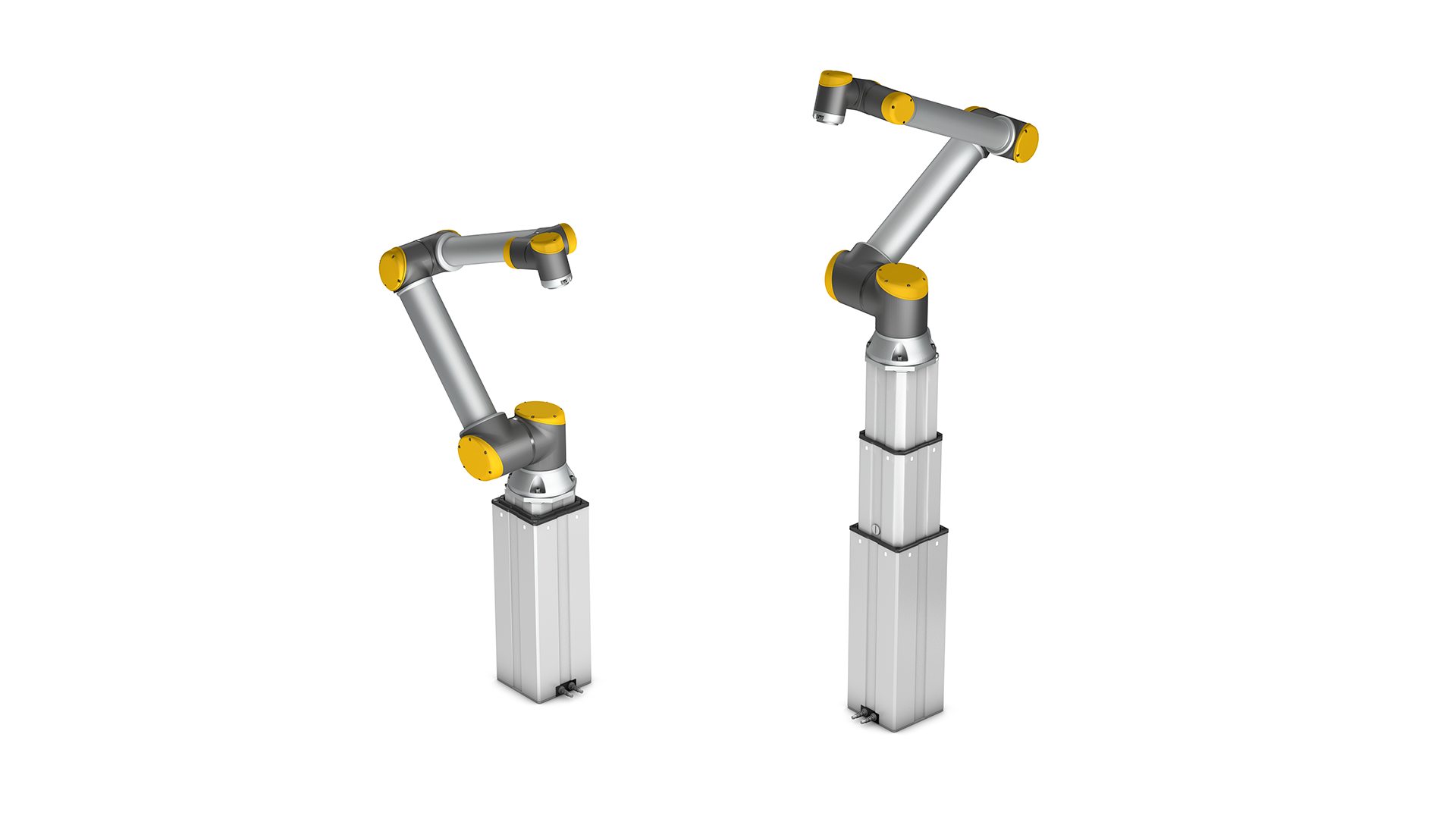
Product overview
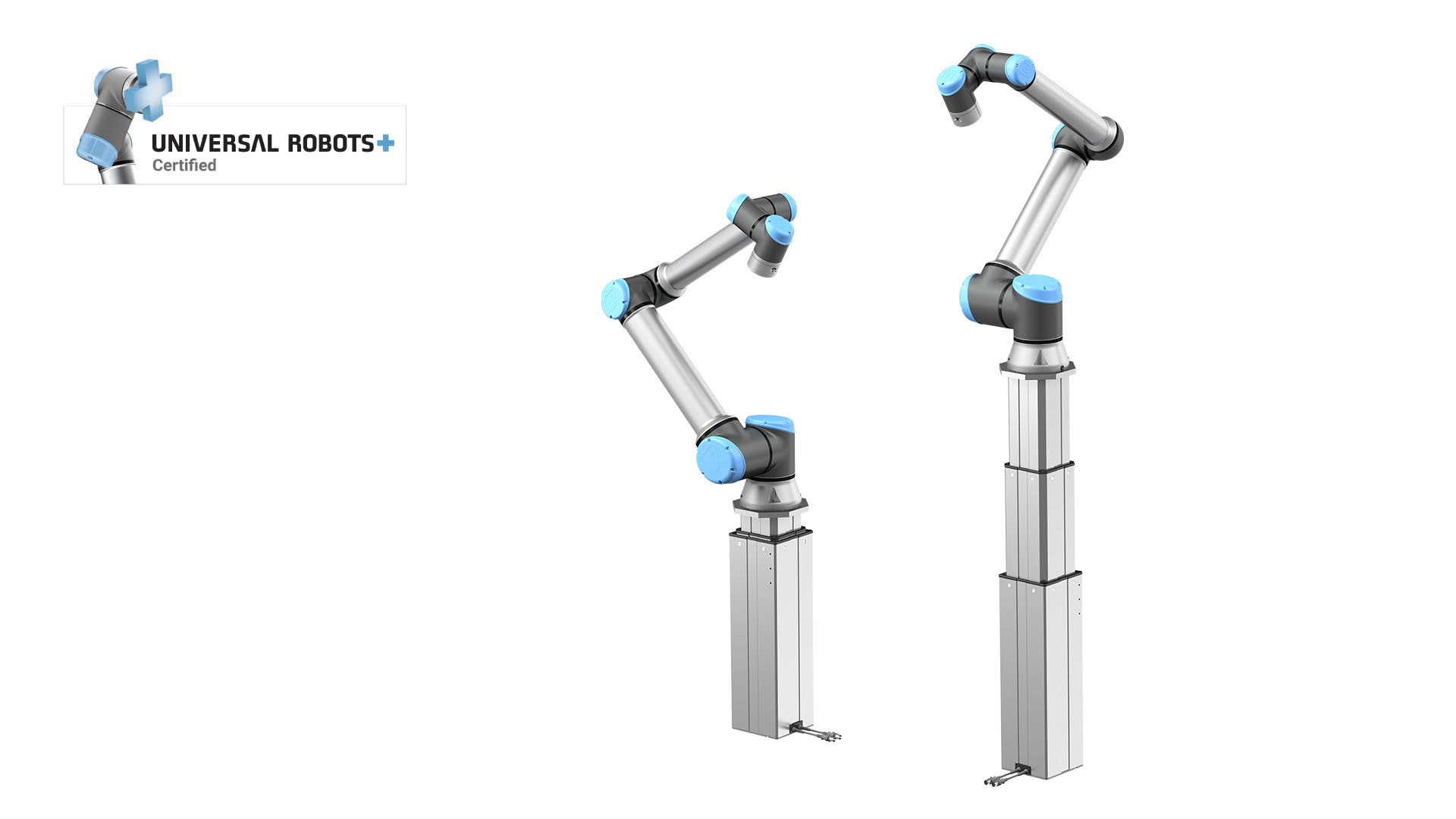
LIFTKIT-UR
- Load up to 1,5 kN
- Speed up to 80 mm/s
- Stroke up to 1 400 mm
- Plug and play with Universal Robots
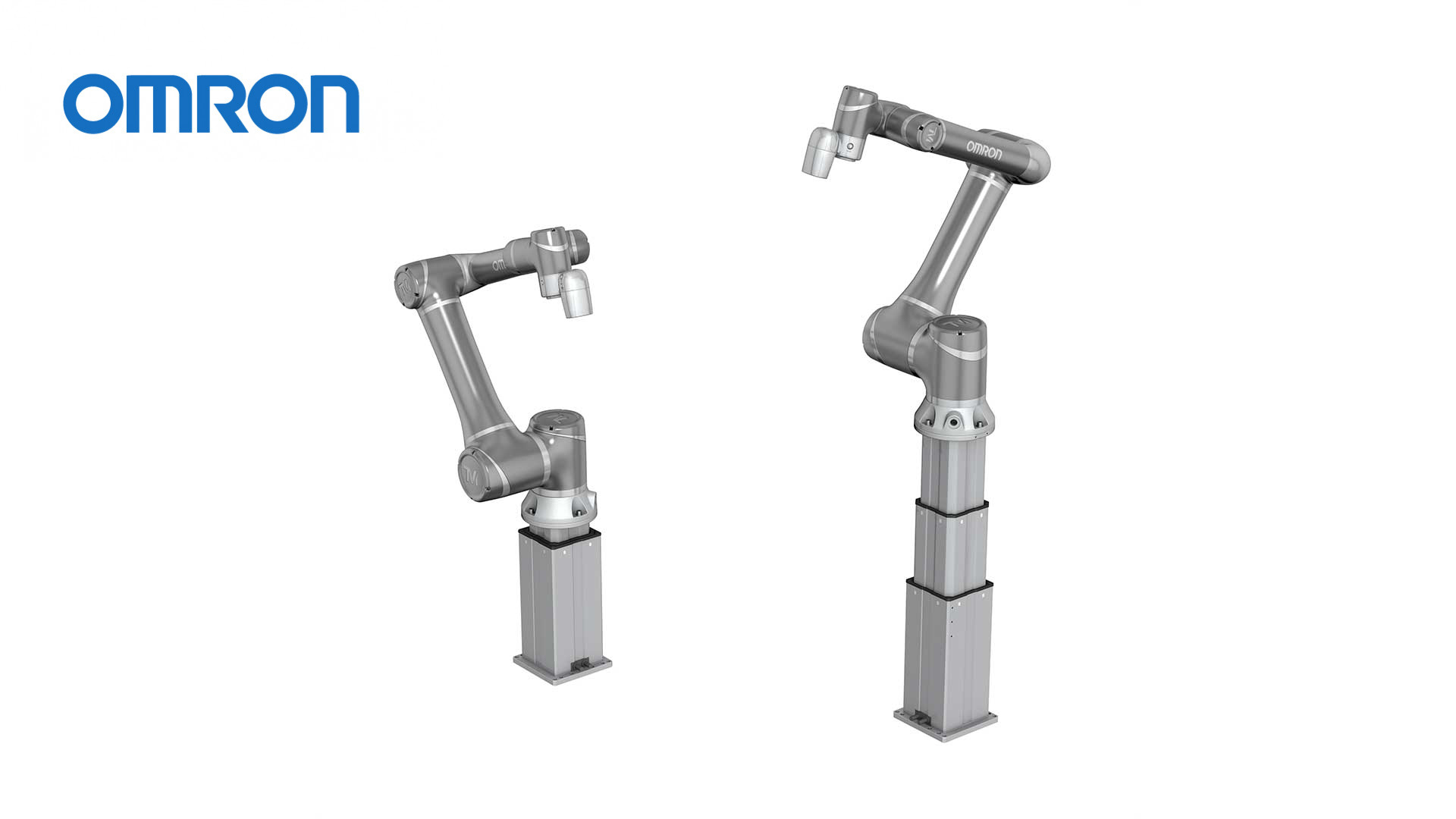
LIFTKIT-OM
- Load up to 1,5 kN
- Speed up to 80 mm/s
- Stroke up to 1 400 mm
- Plug and play with Omron TM
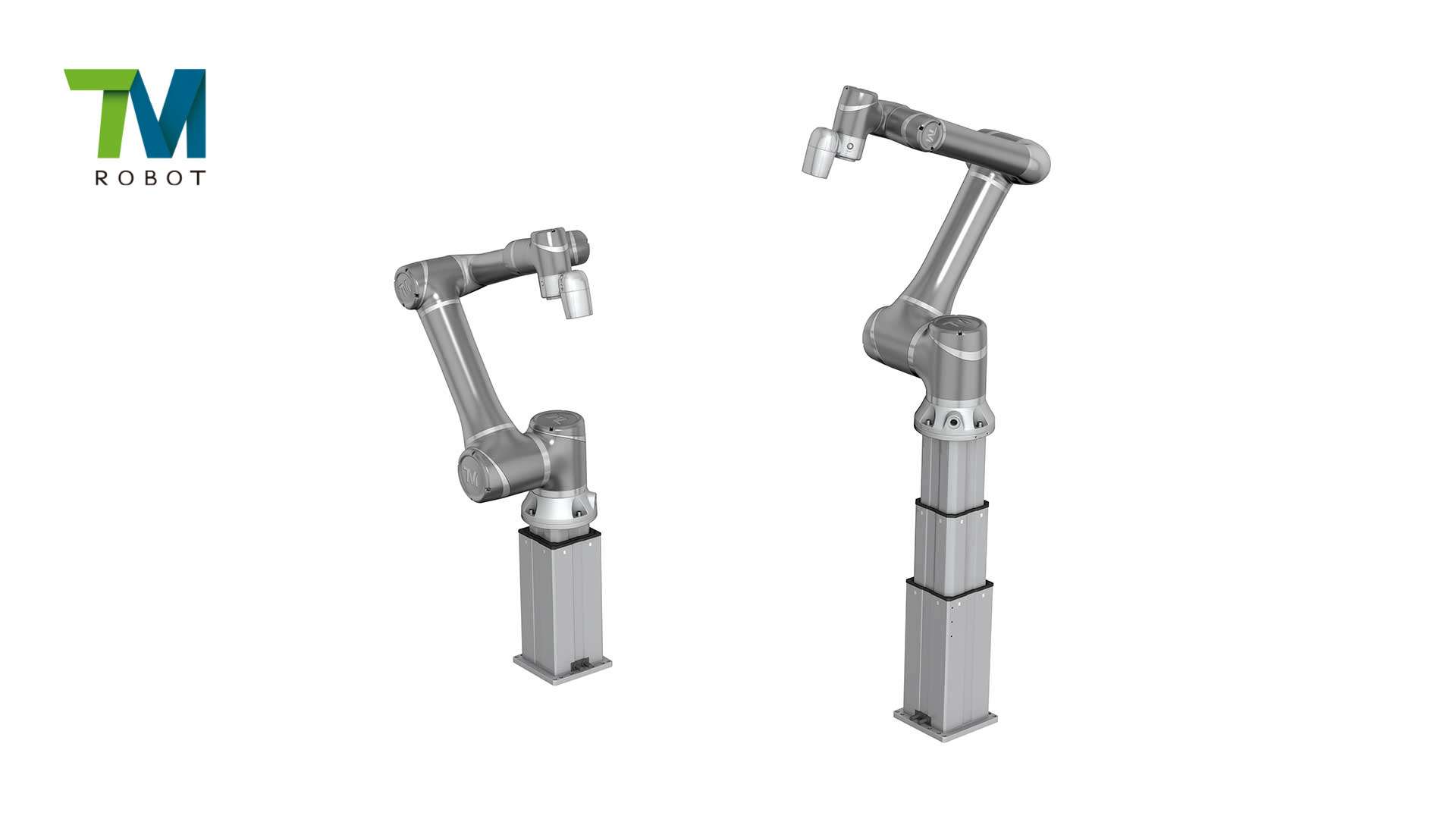
LIFTKIT-TM
- Load up to 1,5 kN
- Speed up to 80 mm/s
- Stroke up to 1 400 mm
- Plug and play with Techman TM

LIFTKIT-0S
- Load up to 1,5 kN
- Speed up to 80 mm/s
- Stroke up to 1 400 mm
- Compatible with any robot
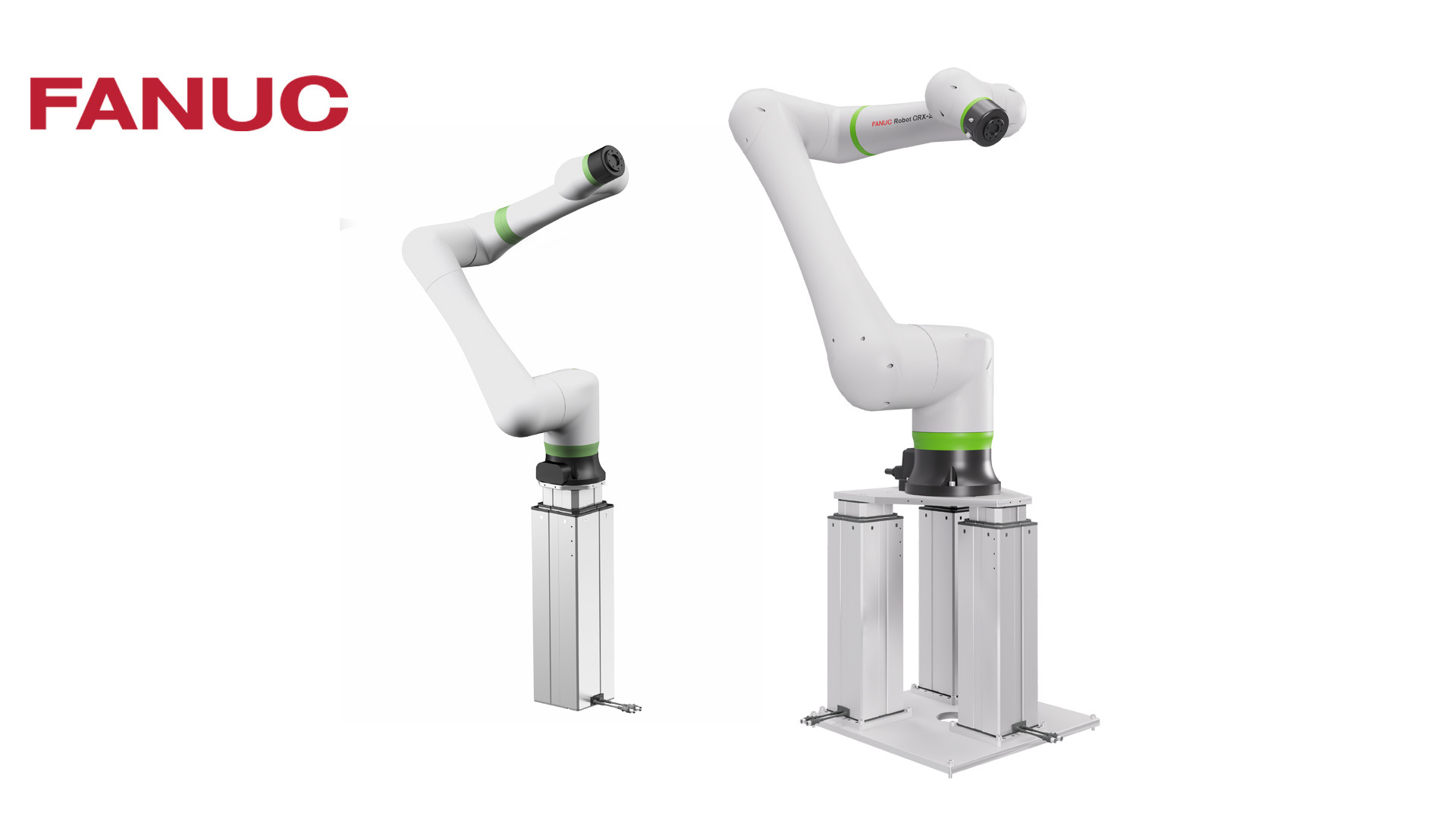
LIFTKIT-FA
- Load up to 1,5 kN
- Speed up to 80 mm/s
- Stroke up to 1 400 mm
- Plug and play with FANUC cobot
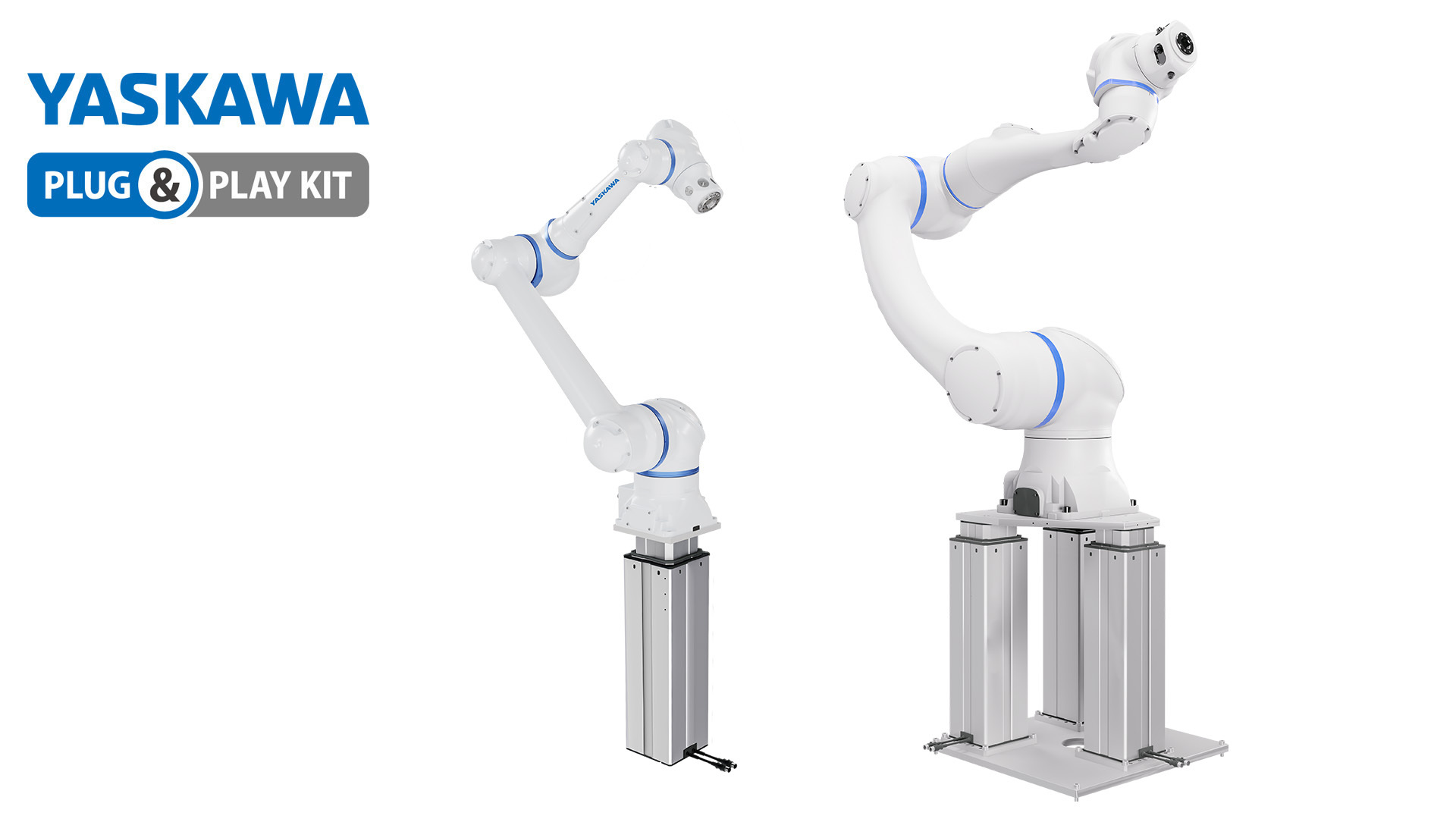
LIFTKIT-YA
- Load up to 1,5 kN
- Speed up to 80 mm/s
- Stroke up to 1 400 mm
- Plug and play with YASKAWA cobot
Videos
LIFTKIT - Discover how to increase the productivity of your robot
Liftkit and slidekit - extend your possibilities
Frequently asked questions
A lifting column is an electromechanical device that provides controlled vertical motion, typically by using a motor-driven spindle or linear actuator mechanism enclosed within a telescopic column structure. When activated, the internal drive system extends or retracts the column, allowing the mounted equipment—such as a robot or tooling platform—to be raised or lowered with precision. Lifting columns are designed to offer high stability, silent operation, and accurate positioning, making them ideal for applications like palletising, assembly, inspection, or ergonomic workstation adjustment.
Not exactly. While both devices convert rotary motion into linear motion, a lifting column is a complete system specifically designed for allowing offset loads for vertical movement and typically integrates a linear actuator inside a telescopic housing. It also includes structural elements for stability, cable management, and often a control interface for easy integration. A linear actuator, on the other hand, is a single component that can be used in various orientations and may require additional design elements to form a complete vertical lifting system. In short, a lifting column is a specialized implementation of linear motion technology, optimized for vertical applications.
Column lifting offers several important advantages for industrial and workshop settings. It ensures lower energy consumption compared to traditional lifting systems, making it both cost-effective and environmentally friendly. Maintenance is simpler and more efficient thanks to its streamlined design. From an ergonomic standpoint, column lifting improves worker comfort by positioning loads at optimal heights, reducing physical strain. It also provides high precision in movement and alignment, which is essential for delicate or complex tasks. Lastly, the system is highly reliable, offering consistent performance with minimal downtime.
Need more
information?
Ask our experts.
